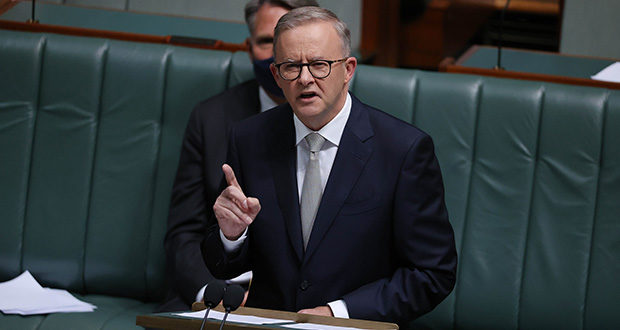Australia is facing a rapidly ageing population with an urgent need for assistance – the numbers from the recent Australian Bureau of Statistics census did not beat around the bush.
Experts fear the already stretched aged care sector in its current state will not be able to provide the service needed in the future.
The census showed the population aged over 65 had increased by nearly 20 per cent since 2016, now close to 4.4 million older people.
Today, almost 1 million older Australians require assistance in their day-to-day life, an increase of close to 50 per cent compared to six years ago.
Dr Karla Seaman, a research fellow in the Aged Care Evaluation and Research Team at the Australian Institute of Health Innovation at Macquarie University, says the need for reform is pressing.
"The aged care sector's systemic issues will have to experience dramatic changes to cope – there's a lot of work to be done," Seaman says.
"The current plan is not meeting the ageing population's needs, so the increasingly ageing population will put extreme pressure on the under-resourced and underfunded sector.
CEDA's latest report echoes the sector's dire need for recourses and estimates that 65,000 aged care workers will quit each year due to poor working conditions and pay.
Yet, these trends are not inevitable and can be reversed if appropriate and consistent actions are undertaken, the report adds.
The Fair Work Commission has recently taken steps to mediate workforce shortages by lifting minimum wages by 5.2 per cent.
Nevertheless, Seaman says ensuring wages and remuneration are comparable to other sectors is just one aspect of repairing the industry.
"The workforce needs to be recognised for its diversity and valuing all professions involved within aged care," she says.
"So not just the clinical side, but allied health, dental, spiritual and diversional therapy.
"Other factors driving the sector's workforce are career progression, satisfaction and attention to the people.
"Plus, a significant increase in funding is needed."
At the moment, the government is spending over $22 billion annually on aged care.
Nevertheless, it's proven inadequate to meet the basic standard of care recommended by the Royal Commission.
Labor pledged aged care would be one of their 'top priorities', vowing to place 24/7 registered nurses in homes, fly in overseas workers and significantly increase funding.
But last week, the department said it would raise the aged care budget by 1.7 per cent, a rate far lower than the current inflation rate of 5 per cent, and so effectively opting for a subsidy 'cut'.
"They need appropriate funding to grow infrastructure, build new services in-home and prepare aged care for the future if they want to meet the needs of the increasing ageing population," Seaman says.
"They also need to increase innovation to enable that growth and support quality improvement progress and technology initiatives.
"Innovation is the key to transition and continuity of care – not only the ageing cohort growing in size but also the complexity of the population."
Becoming older increases the risk of developing chronic conditions, such as diabetes, arthritis and dementia.
They tend to develop gradually and often require long-term and complex management by health professionals while placing heavy demands on Australia's health care system.
This year's census revealed a steep growth in older people over 65 living with one or more long-term conditions.
Whereas the ABS estimated in 2018 that 80 per cent of older people had comorbidity, the latest census set the bar as high as 98.5 per cent.
"It demonstrated an increased number of comorbidities quite significantly from the last census data," Seaman says.
"All the while, the line between acute and aged care is also becoming finer and more minimal."
The prolonged strain on the acute care sector has been developing for decades, according to an ABC report.
Due to the proportion of the ageing population with complex medical needs, emergency departments have seen a nationwide increase of 3.2 per cent of people needing health care services.
Seaman calls for improved integration between at-home and residential care to relieve pressure on the healthcare system since older people are staying at home for as long as possible.
"The brunt of the increased ageing population is going to be felt first by the at-home sector, which is already significantly behind in its ability to provide care," she says.
"Many older Australians are not getting the care packages they need to be adequately supported at home.
"So it's going to be a huge pressure on the at-home care sector – it's going to flow onto residential homes."
The ABS census also highlighted a significant generational shift as millennials are overtaking the baby boomers.
Each population consist now of over 5.4 million people, with only 5,662 more boomers than millennials counted on 10 August 2021.
Seaman anticipates this shift will seriously impact the aged care workforce, considering boomers account for one in eight people working in the sector.
"They are the generation most likely to volunteer and provide unpaid assistance to others," she says.
"They'll be sorely missed when they leave their position and enter aged care themselves.
"We might even be losing that volunteer-based sector that the aged care future relies on."
Seaman says we must adopt a bold approach toward aged care to facilitate true reform in the sector.
"We need to change the negative conversation towards aged care to a more proactive outlook on how we must continue with aged care reform," she says.
"And really advocating for essential changes to support the growing ageing population.
"A lot is being done, but there's a lot more to be done."
The newly-formed Aged & Community Care Providers Association (ACCPA says the census is a timely reminder that we need to treat older Australians with dignity and respect.
"We must plan for the future and reform the aged care sector now," says Interim CEO Paul Sadler.
"This should be a clear prompt for the government to re-evaluate its current plans for residential and at-home aged care services and what this means for the sector's future."
Last Friday, the brand-new peak body came into force; a merger that was recommended by the Royal Commission to "ensure urgent aged care reform".
"Aged care reform that addresses the ongoing workforce and funding crises must continue to be on the table if we are to give quality care that supports this expansion of Australia's older population," Sadler says.
"We look forward to working with [new ministers] Mark Butler, Anika Wells, and Ged Kearney on this critical issue."
Do you have an idea for a story?Email [email protected]
 Aged Care Insite Australia's number one aged care news source
Aged Care Insite Australia's number one aged care news source

